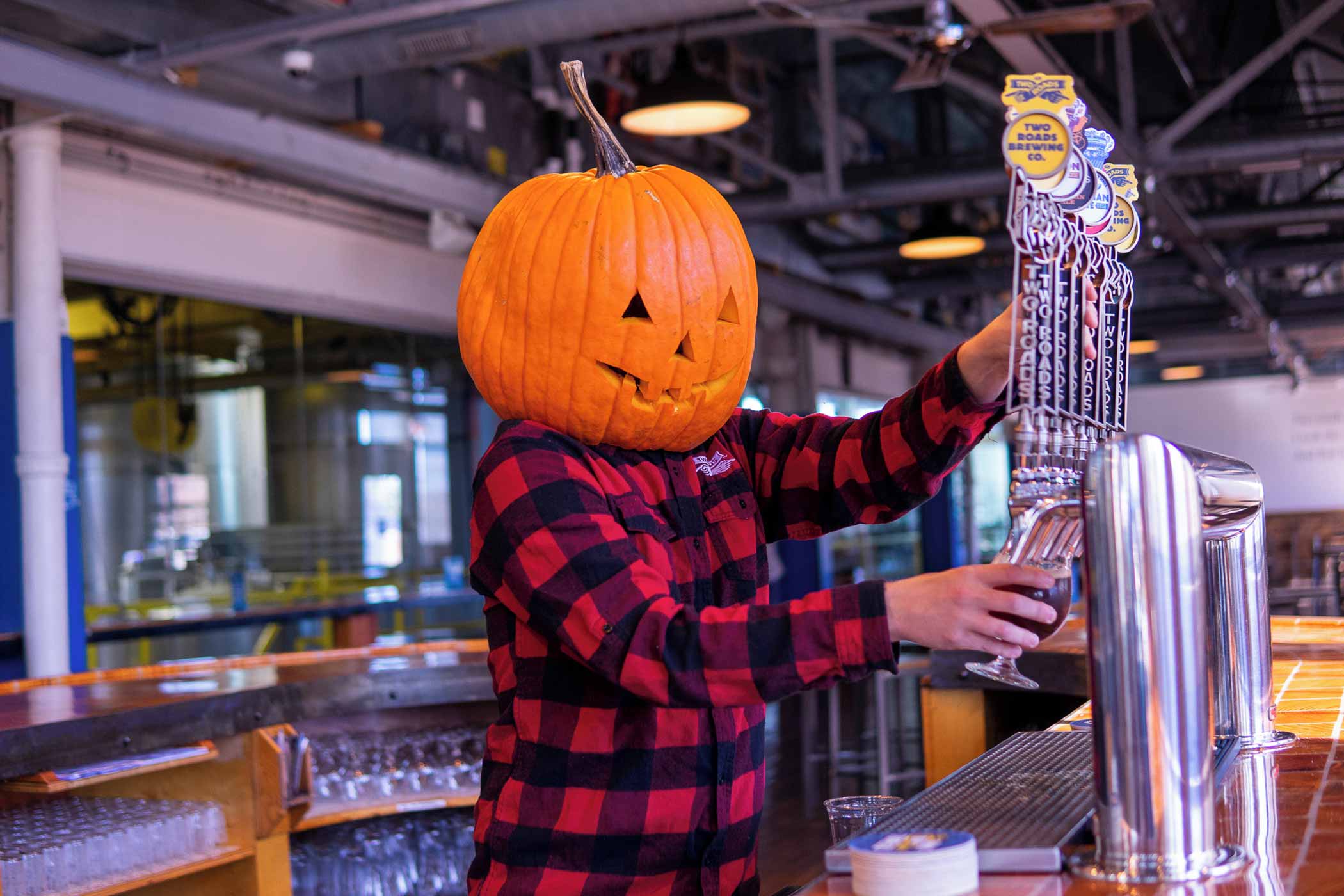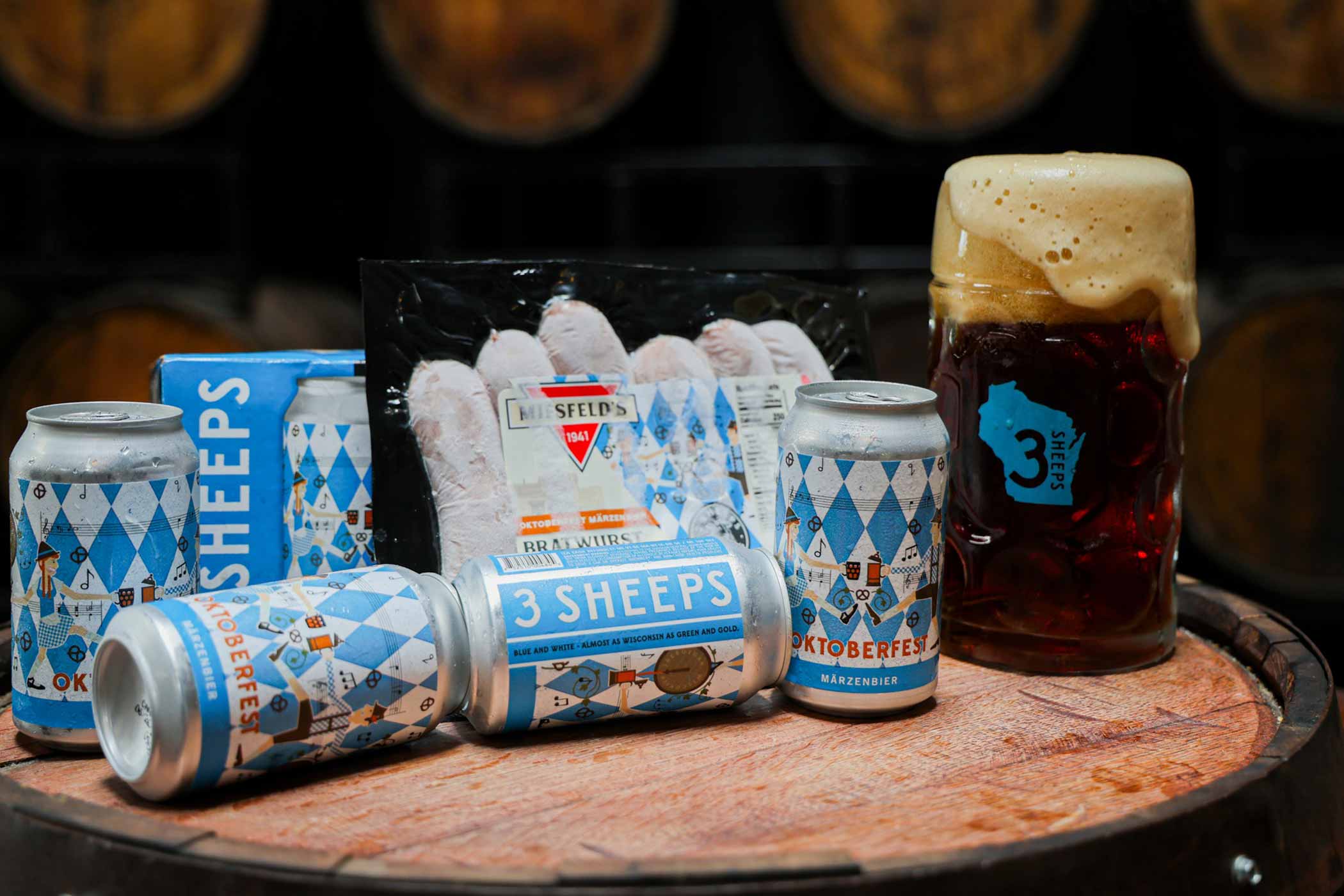Shop
Are Pumpkin Beers ‘Squashed’ for Good?
What's Ailing Pumpkin Ale?
Looking for More Fall Stories?
It’s that time of year: The air’s gone swampy, your lawn looks like a hayfield, you’ve used up all your vacation time, and the mosquitos are ravenous. Time to crack open…a pumpkin ale?
The world loves seasonal creep. Why should the summertime blockbuster movie season start in June when it could start in May, April, or even March?
Why not run Christmas ad campaigns in July instead of waiting for November?
Sure, horror movies happen all year round, but kicking off Halloween shenanigans in August still feels premature.
The Gregorian calendar comprises twelve months.
There are rules.
Glacial advancement of seasonal festivities applies better to the pumpkin spice season than any other. For instance, Starbucks and Nabisco already have their various fall-flavored products on shelves, the former one day earlier than last year—which was apparently news.
The story’s the same in the craft beer world: Some consumers like pumpkin beer, and some hate it.
After all, the craft beer consumer isn’t a monolith; not everyone who drinks craft is a beer geek. Some people just like good beer and aren’t compelled to pick apart their beer down to the last ester; those people like pumpkin beer. On the other hand, die-hard brew nuts: They don’t.
Ages ago, before pumpkin spice became a late-night TV punchline and was dubbed “basic,” pumpkin beers had a moment in the spotlight. But for the last seven or so years now, pumpkin beers have seemingly faded from the limelight.
What happened? Why did this ubiquitous seasonal style fall from grace? When did pumpkin ale rot on the vine? Or did it, actually?
It’s The Great Pumpkin Beer Popularity Contest, Charlie Brown
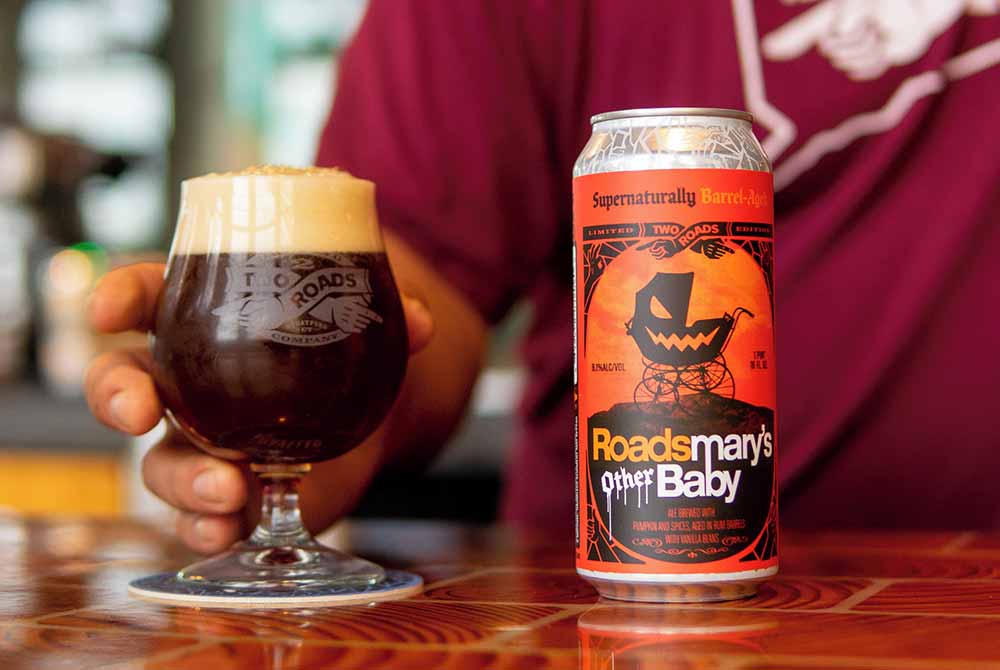
Photography courtesy of @tworoadsbrewing | Two Roads Brewing Company
Fran Caradonna, former CEO and now an advisor to Schlafly Beer in Saint Louis, Missouri, went straight to Webster’s for answers when she spoke with Hop Culture two years ago. “I looked up the word ‘popular,’” says Caradonna, “and it means ‘liked by a lot of people,’ which [pumpkin beer] certainly is today.” In July of 2022, Schlafly’s sold more beer than they had in a single month in five years, according to Caradonna. Most of that was Oktoberfest and Pumpkin Ale, which goes back to her point about popularity: Many people like pumpkin beer; ergo, pumpkin beer is popular.
But Caradonna has another word worth defining in the conversation about pumpkin beer: “trendy.” What is the best synonym for trendy? “Fashionable.” “It’s easy to see that pumpkin beer isn’t fashionable anymore,” explains Caradonna.
In fact, pumpkin beer hasn’t been in vogue for over a decade. The style’s time in the sun came in the mid- to late aughts before tripping, face planting, and stumbling downhill.
The Atlantic first reported on the style’s divisiveness in 2011 while other outlets picked up the thread years after the fact.
For Phil Markowski, brewmaster and co-founder of Stratford, Connecticut’s Two Roads Brewing Co., pumpkin ale’s reputation dip hasn’t impacted the production of their own pumpkin ale, Roadsmary’s Baby. The rum barrel-aged brew remains stable. But he has noticed the trend come and go.
“The pumpkin beers out in the market have gone through cycles,” says Markowski. “I remember there was a proliferation of pumpkin ales years back. That no longer seems to be the case. So I think that segment has shrunk to a few dominant players.”
That includes archetypal brands like Shipyard Pumpkinhead Ale and Southern Tier Pumpking. Although, a few years ago, the latter missed the top ten best-selling pumpkin beers, and the former came in fifth.
Markowski attributes this in part to broader craft beer phenomena. “The whole industry has had a little bit of a drop-off volume-wise from pre-COVID days,” he explains. “That’s just the world we live in. And there’s lots of competition with hard seltzers and RTDs, and then you have younger people not drinking as much in general, but perhaps drinking less beer particularly.”
If craft beer writ large took a drop over the last three years, pumpkin beer logically took a bigger drop–but only among the beer geeks.
Thinking Twice About Pumpkin Spice
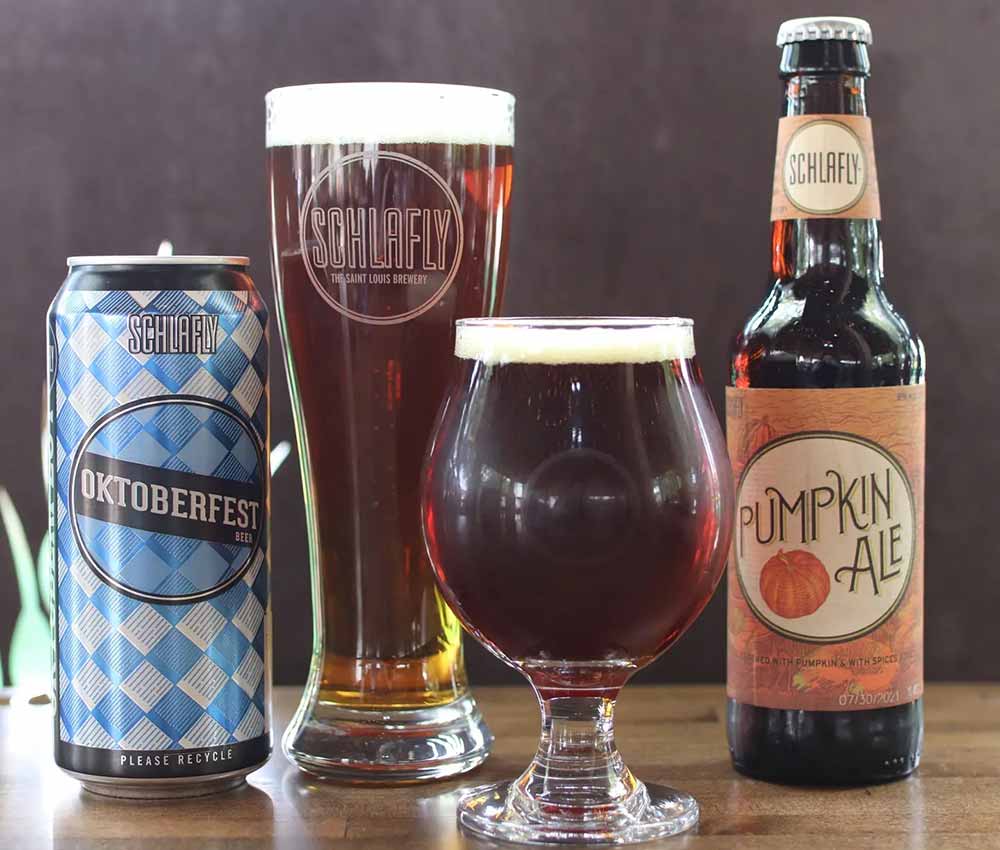
Photography courtesy of @schlaflybeer | Schlafly Beer
Caradonna and Markowski recognize that craft beer and brewing devotees have a marked distaste for pumpkin. Average customers buy these beers, not the other way around.
“As far as [pumpkin beer’s] appeal to beer geeks, I always thought of it as more of a mainstream thing,” says Markowski. “I’ve always heard beer geeks disparaging pumpkin ales.”
Beer geeks, a term neither Caradonna or Markowski intend as pejorative, habitually gravitate toward new fads, provided that it’s brighter and shinier than the last: pastry stouts, pastry sours, sour IPAs, cold IPAs, dark lagers, and Czech pilsners, to name a few over the last half-decade.
By comparison to any of these, a pumpkin ale is humble and humdrum at the same time.
“It’s not a very sophisticated beer,” says Caradonna of the pumpkin ale, “and beer lovers love the complexity of a finely crafted beer. I drink wine, but I don’t know a lot about wine. If you’re someone like me who doesn’t know a lot about wine, I’m easily satisfied with something that a wine expert would think is dreck. So I think that’s part of it.”
The reason beer lovers wrinkle their noses at pumpkin ale is, in Markowski’s view, the same reason the average consumer likes pumpkin ales: These beers may not be sophisticated, but for most consumers, they taste recognizably like beer.
Breweries can make beer that tastes like oatmeal cookies, jelly beans, cinnamon rolls, and grassy tropical islands under a hazy sun. But not everyone wants that. “You’ve got what seems to be a quiet movement of people who are upset by that trend and hoping for the return of beer-flavored beer,” Markowski points out.
Pumpkin beer is certainly flavored, but outside of exceptions in the style overloaded with adjuncts, it tends to read like the base beer first and foremost: a wheat ale, a brown ale, a porter, a stout. The pumpkin is an enhancement and not the star.
“Done right, anything that’s a flavored beer, I think, first and foremost, should taste like beer,” Markowski says.
The consumer shouldn’t have to hunt around to find the beer notes. The beer should be upfront. The nutmeg, cinnamon, and other fall seasonings key to the style should be top notes. Easy, elegant, and delicious when brewed correctly.
A Big Fruit for Big Breweries
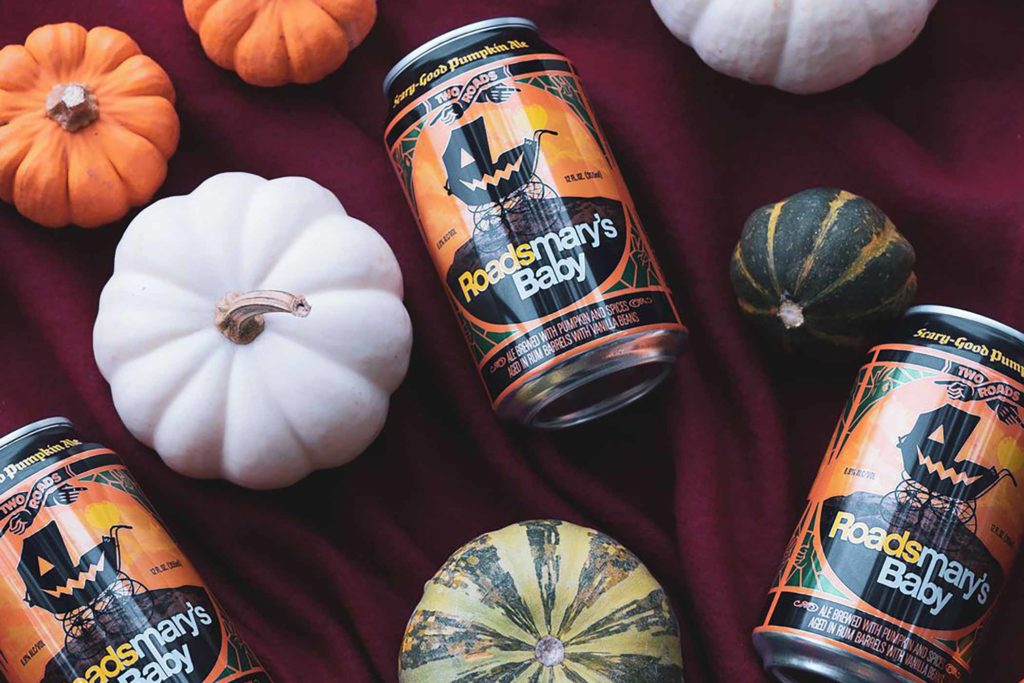
Photography courtesy of @tworoadsbrewing | Two Roads Brewing Company
Of course, if it’s really all that easy, more breweries of all shapes and sizes might be inclined to try making their own pumpkin beers.
But they aren’t.
Turns out pumpkin beer is a chore to make even without fancy-pants ingredients–mainly because the pumpkin itself is a hassle.
Caradonna and Markowski operate in different regions of the country, with different relationships to pumpkins, but they both know the stone-cold truth about this cumbersome fruit: Making them taste good takes finesse.
First, getting the flavor of pumpkin right takes a deft hand. “A lot of people aren’t aware that pumpkin itself is basically a squash and doesn’t have a whole lot of flavor,” says Markowski. For example, pumpkin pie balances the actual flavor of pumpkin with sweeter spices like nutmeg, clove, cinnamon, and vanilla.
Second, the actual pumpkin itself can be hard to handle. Think about the sweat equity required to carve even one jack-o’-lantern, not to mention the Herculean cleanup. Now imagine cleaning the number of pumpkins necessary to make pumpkin beer. Then imagine chopping and roasting them and finding the right way to put them into a beer.
And what about the beer’s style? It’s a lot.
Bigger breweries might be able to sustain that process, but microbreweries that want to add a pumpkin beer to their lineup need to consider a twist on the old adage first: Is the squash going to be worth the squeeze?
Is Pumpkin Ale Squashed For Good?
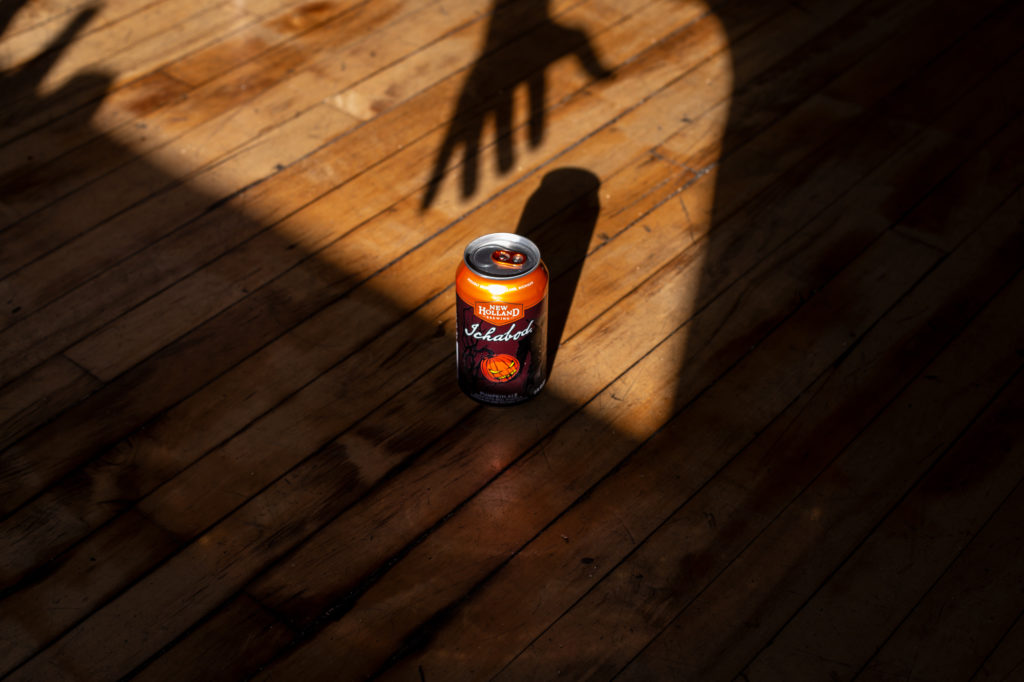
Photography courtesy of The Hop Review
No wonder pumpkin ale has lost its luster in recent years. Smaller or mid-scale breweries that likewise lean into direct-to-consumer marketing either can’t keep up with the style’s demands or don’t want to—and who can blame them?
Whether or not pumpkin ale is passé among trend-chasing purists feels like a lesser concern when contrasted with the logistics of brewing it.
But if people want, to echo Markowski’s words, beer-flavored beer, then maybe pumpkin beer is poised for a comeback.
Just look at lagers. Boasting the flavor profile most people think of when they think about how beer tastes, lagers are hot right now among the purists and the every-drinker.
Aside from all the extra components necessary to bring out the best in pumpkin beer, there’s a simplicity to the style that’s well-suited to that shift in consumer preference.
“I think the typical craft drinker is maturing,” ponders Markowski. “They still appreciate IPAs, no doubt, but take the blinders off and look at what else is out there. Maybe something like pumpkin beer is going to fit that hopeful trend that we’re headed back to more traditional beer.”
And pumpkin beer certainly is traditional. Bill Owens, owner and founder of Buffalo Bill’s in Hayward, California, one of the early pioneers in the American craft beer revolution, heard that George Washington brewed beer using pumpkin himself; the Cherry Tree Myth might mean he really could tell a lie, but primary documents suggest otherwise. Thanks to Washington and Owens, pumpkin beer actually predates IPA in America’s craft beer canon.
Contemporarily, IPA is the reigning king in that canon, and no pumpkin beer renaissance is likely to change that. But trends come and go. Popularity doesn’t, so the pumpkin beer crop could flourish again, even now.
Hop Culture’s Favorite Pumpkin Beers For Fall
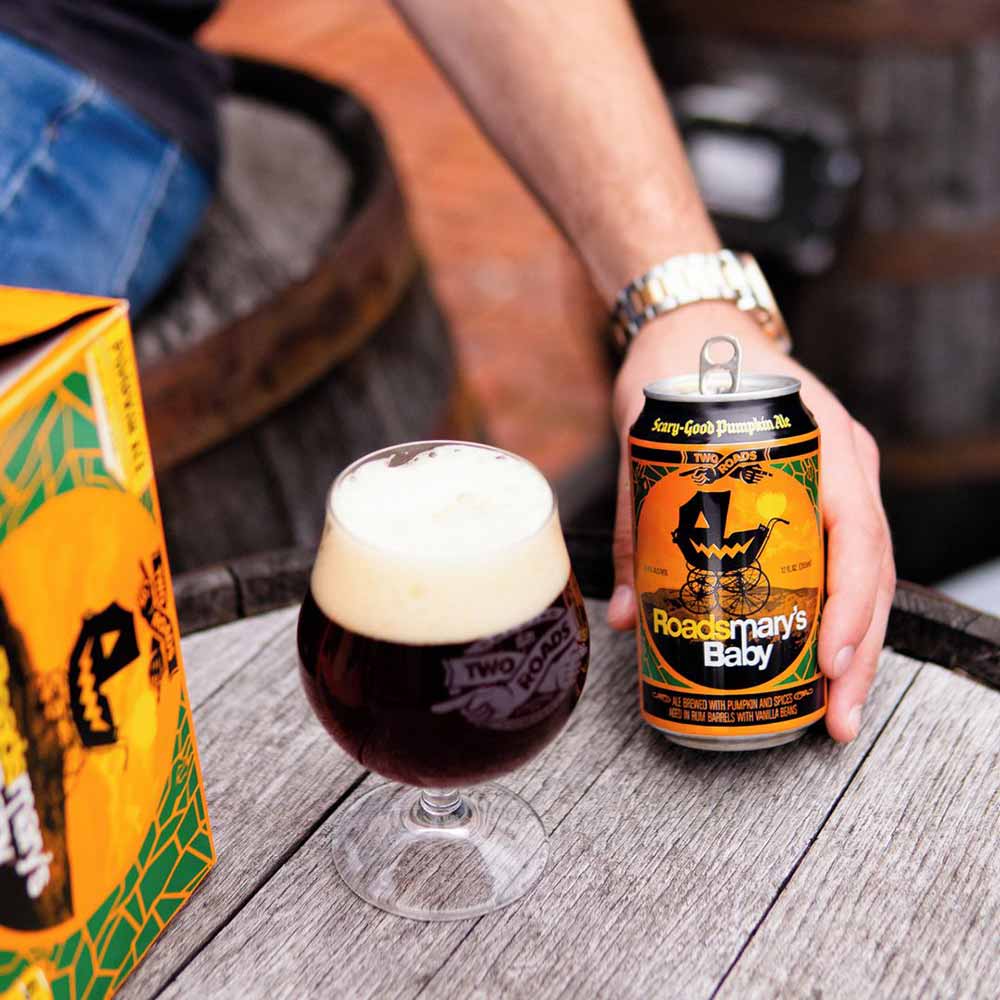
Photography courtesy of Two Roads Brewing Company
Roadsmary’s Baby – Two Roads Brewing Co.
Stratford, CT
In New England, this is arguably the gold standard of pumpkin beer: harmonious, accessible to the everyday drinker, but with complexity that should appeal to the beer connoisseur. Rum barrel aging has a pronounced effect on Roadsmary’s Baby’s other components, à la vanilla beans, putting this one over the top.
Pumpkin Ale – Schlafly Beer
Saint Louis, MO
Speaking of pumpkin pie, Schlafly’s Pumpkin Ale is the most straightforward version. This beer is “pumpkin pie in a bottle.” A gorgeous dark amber in the glass, Pumpkin Ale drinks smoothly with a good, frothy head and just the right burst of robust pumpkin undertones enhanced by the traditional spice mix for the style.
Jack-O-Planter – Old Planters Brewing Co.
Beverly, MA
The lads at Old Planters are aware of the expectations people have for pumpkin beers, and they keep their version familiar with, once again, spice standbys like cinnamon and nutmeg. But Jack-O-Planter stands out from similarly crafted beers because Old Planters emphasizes roasty pumpkin goodness as the dominant flavor—while somehow managing to keep the beer’s texture nice and crisp.
Good Gourd – Cigar City Brewing
Tampa, FL
Hop Culture appreciates fun wordplay, so Good Gourd almost feels like a gimme based on the name alone. But Cigar City must’ve had the “trick” in “trick-or-treat” on their minds when they brewed Good Gourd. The beer drinks like a lighter ale, so you might not guess that it clocks in at a respectably dangerous 8.5% ABV until you’re already over the “tipsy” line.
Good news! You can actually buy this beer and get it delivered straight to your door from the Untappd Shop.
Pumpkin Spice Yeti – Great Divide Brewing Company
Denver, CO
Pumpkin Spice Yeti, on the other hand, doesn’t bother hiding its imperial side. That 9.5% ABV isn’t a trick. It’s no joke, either. But for cool October nights when skeletons, spirits, and haunts litter your block, a coffee-forward warmer like this is just what you’ll need to ward off the nip in the air and the ghouls at the door.

